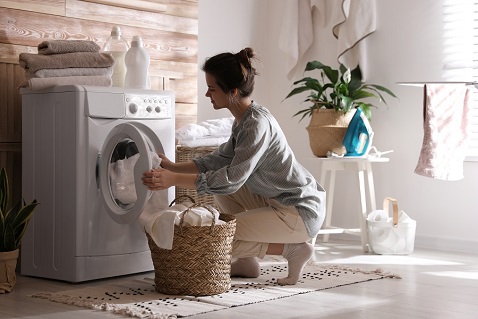If you’re wondering ‘Why is my washing machine not spinning?’, don’t worry — there might be a simple fix. First, we’ll cover what you can do yourself if your washing machine keeps stopping mid-cycle. Then we’ll explain when you might need to contact a professional.
For a washing machine that starts turning and then stops, the most likely causes are:
- The drum is too full
- The laundry is unbalanced
- There’s too much detergent
- The washing machine is unstable
- The drain hose is blocked
If the machine doesn’t start turning at all, some possible reasons are:
- The door or lid isn’t fully closed
- The catch on the door or lid is broken
- The motor has broken down
- The drive belt has broken
Check the laundry load
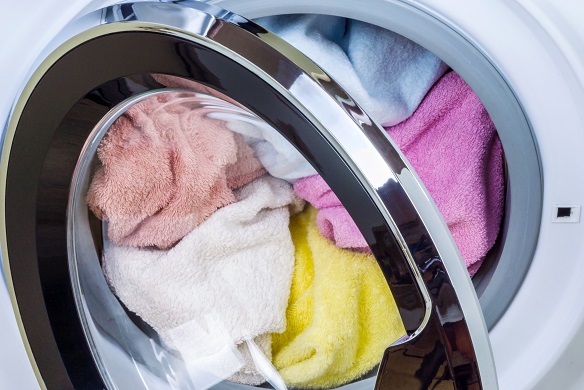
Lots of washing machines have sensors that stop the drum spinning if it starts wobbling off balance. This stops the appliance from moving around too much and damaging itself.
Washing machines often wobble when there’s one heavy item in the drum, like a big towel or blanket. As an item like this moves around, its weight pushes the drum from side to side.
Putting in another heavy item at the same time, so the weight moves more evenly, can help. If the machine gets stuck mid-cycle, try stopping it, draining the water and rearranging the laundry.
The problem could be that the drum is overloaded. As a rule, you should fill it no more than three quarters. If the items are really heavy, it’s best to fill it less. Lots of washing machines also have a sensor that will stop the drum turning if it’s too heavy. This helps protect the motor from excessive strain.
Make sure the door is closed properly
As a safety feature — and to avoid flooding your floor — washing machines won’t start if the door isn’t closed.
Some washing machines show a lock symbol on the control panel when the door is properly shut. If that symbol isn’t showing, you should check the door. You might not have pushed it closed properly — or there might be something caught in the door catch.
With top-loading washing machines, the lid catch might not be making good contact. Take a look and see if it’s bent or not touching when you bring the lid down.
Check that the washing machine is level
If your washing machine doesn’t have a level footing, it will rock during the spin cycle. This can damage the machine itself, as well as nearby furniture. So lots of washing machines will stop automatically if they’re off balance.
With your machine empty and turned off, try pushing it very gently. If it rocks or moves, that means the feet aren’t firmly on the ground. You can also put a spirit level on top of the machine to see if it’s level, although the floor might not be.
First you’ll need to adjust the feet so they all touch the floor. Usually, you can do this by turning each foot anti-clockwise to lower the machine and clockwise to raise it. If the floor is very uneven, you can also get rubber anti-vibration pads to even it out.
Change the amount of detergent

Believe it or not, too much detergent — or the wrong type — can stop your washing machine from spinning. Because the machine shouldn’t produce too much foam, it will stop spinning to let the excess drain away. Check your detergent label to make sure you’re not using too much, and that it’s right for your machine.
Unblock the drain hose
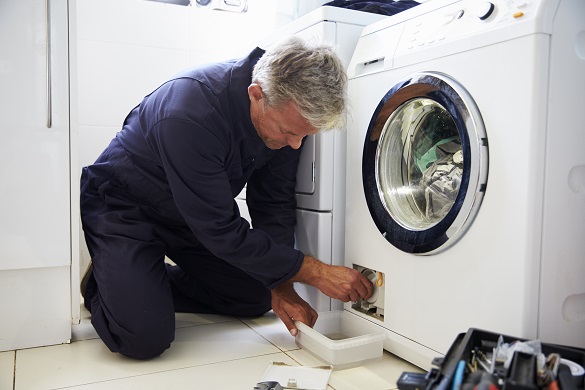
Your washing machine shouldn’t start its spin cycle until the water has drained (otherwise it won’t get the water out of your clothes — it will just spin them around all wet.)
So if the drain hose is blocked, the machine won’t drain or start the spin cycle.
Before you start, check your machine’s manual for any specific advice. Also, ensure the machine is switched off and unplugged at the mains.
First, check the hose isn’t crushed or bent. If it is, you’ll probably need to replace it. On the other hand, it might be clogged with debris. To fix that:
- Get a bucket or washing up bowl ready
- Unplug the machine from the mains
- Pull the machine out from the wall
- Disconnect the drain hose at the back, catching any water in the bucket
- Unscrew the hose’s other end from the pipe in the wall
- Use something like a wire hanger to unclog what’s blocking it
- Reattach the hose to the washer and the wall
Get the motor or other parts repaired
If you’ve tried everything above and had no luck, your washing machine probably needs a professional repair. It might be that the motor has given out, or the drive belt is faulty. Every washing machine is different, so it’s hard to know what’s wrong without getting an expert to take a look.
Bear in mind that washing machines are complex electrical items, which can be dangerous. You should never try to fix an internal issue yourself unless you have the right training and experience.
Before contacting an engineer, it’s worth checking whether a power surge has affected the machine. Unplug it, wait a few minutes and plug it back in again. If you can’t restart the cycle, that’s the last check you can do yourself. It’s time to book a repair.
Our blog is loaded with more related articles

Washing machine tips
How to extend the lifespan of your washing machine
The humble washing machine is the workhorse of a household. By following some simple hints and tricks you could add a few more...
Read more
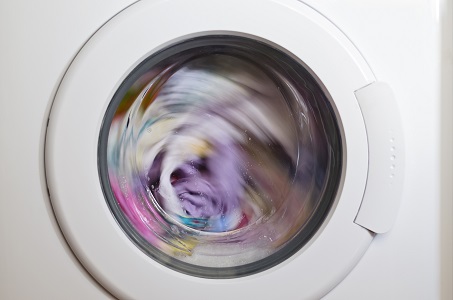
Washing machine tips
How to keep your washing machine spinning
It's important not to take your hard-working appliance for granted by making sure you give it some TLC. This can be done th...
Read more
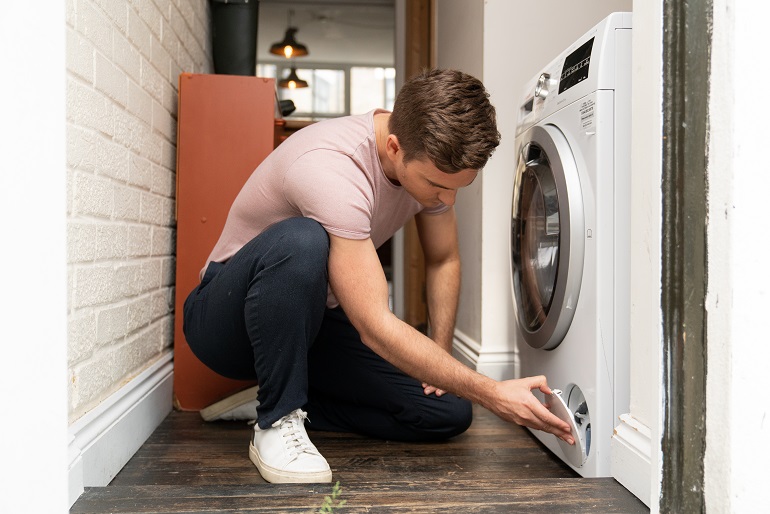
Washing machine tips
What to do if your washing machine isn't draining
If your washing machine isn't draining, there are some things you can check before calling an engineer. Find out how to fix...
Read more
